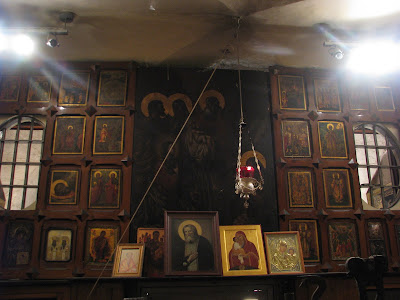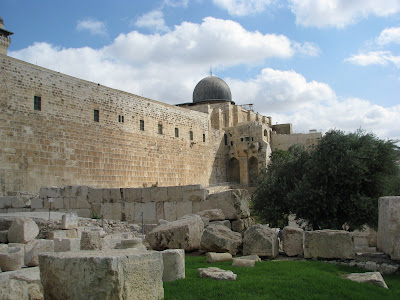It is an amazing site that takes you to almost 5000 years of Jerusalem's history in an absorbing way. Those who knows the importance of the first (957-587 BC) and the second (515 BC-70 AD) Jerusalem temples can never avoid this site. Today, orthodox Jews expect construction of a third temple in Jerusalem with the arrival of the messiah! It would not be an exaggeration to say that if you erase ‘the Temple Mount’ from history, Jerusalem is just like any other ordinary city. All the holiness and quest for Jerusalem are one way or the other linked with the temple; may be the root cause of today's Middle-East conflict is also attached to this site !
This whole area located on the southern side of the temple mount was referred in the Bible as the "Ophel" (II Chronicles 27:3, 33:14, Nehemiah 3:26, 27, 11: 21 and Micah 4:8). The southern wall of the temple mount was fortified and built from Herod the Great (37 BC - 4BC). However, the magnificent temple was destroyed by the Romans in 70 AD, leaving most of Herod's second temple in rubble. Today, the whole area is under Jerusalem Archaeological Park and remains of the temple lie scattered abundantly inside the park.
After purchasing tickets, you can go to the Davidson Center to visit the exhibition rooms and watch a very interesting movie about The Jerusalem Temple. Inside the park, one can still touch the stones of the Temple that were pulled down by the Roman soldiers 2000 years ago; feel the southern wall of the Temple built by King Herod; climb the original steps to the Temple; look at the remains of mikveh (ritual baths) where pilgrims used to purify themselves before entering inside the Temple; stand beside remains of the ancient gates that once opened to the Temple; walk through the Herodian Path which Jesus might have walked, while purifying the Temple from the greedy merchants; stroll through the walls to have wonderful views towards Mt Olives, Kidron and Hinnom Valleys and the City of David.
Don't miss the official link to the park
http://www.archpark.org.il/









































